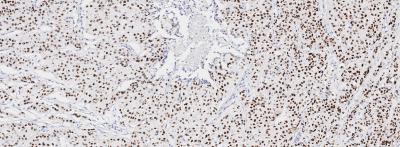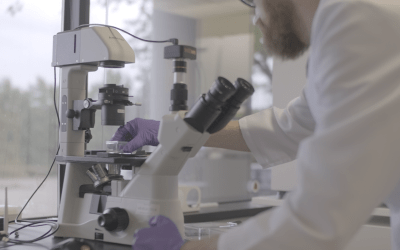 Histological tissue processing is a critical aspect of biomedical research, playing a pivotal role in unlocking the mysteries of human health and disease. At Visikol, the importance of histological tissue processing is not just recognized but meticulously executed with a blend of expertise and cutting-edge technology, propelling scientific discovery to new heights.
Histological tissue processing is a critical aspect of biomedical research, playing a pivotal role in unlocking the mysteries of human health and disease. At Visikol, the importance of histological tissue processing is not just recognized but meticulously executed with a blend of expertise and cutting-edge technology, propelling scientific discovery to new heights.
The Basics of Histological Tissue Processing
Histological tissue processing is the series of steps that transform biological tissues into thin, transparent slices suitable for microscopic examination. This process is indispensable for researchers and clinicians seeking to understand the cellular and molecular details of tissues, aiding in the diagnosis and treatment of various diseases.
 Key Steps in Histological Tissue Processing
Key Steps in Histological Tissue Processing
- Fixation: Formalin fixation stabilizes the three-dimensional structure of tissues by cross-linking proteins. Without fixation, tissues would undergo autolysis, a process where endogenous enzymes within the cells start breaking down cellular components. Additionally, the risk of putrefaction increases, leading to bacterial decomposition of tissues. Formalin fixation arrests these processes, allowing researchers to study tissues in a state that closely resembles in vivo conditions.
- Dehydration: The removal of all free water is crucial for embedding in nonaqueous medium such as paraffin or celloidin. Gradual dehydration with a series of alcohol solutions is important for successful processing. If the dehydration step is incomplete, the tissue will be soft and mushy. This will cause the subsequent steps to improperly achieve what they are intended for. Dehydration steps are generally where issues with processing lie. Overhydration is also a concern because molecular bound water needs to keep the cellular shape and the tissue will be brittle and difficult to work with.
- Clearing: To enhance transparency, the tissue is run through multiple rounds of a clearing reagent, which replaces the dehydrated alcohol. Clearing is vital for optimal visualization under a microscope because it makes the tissue receptive to infiltration. It is very important to choose a clearing agent that is miscible with the infiltration medium.
- Infiltration and Embedding: Tissues are infiltrated with a supporting medium like paraffin wax, creating a solid block. During embedding, the orientation at which the tissue is placed in the paraffin is also important. At any given angle, different structures will be shown depending on what is being looked for.
- Sectioning: Precision is paramount during sectioning, as thin slices enable detailed microscopic examination. Modern techniques, like microtomy, ensure consistency in section thickness.
- Staining: Staining provides contrast, highlighting specific cellular structures or molecules. Hematoxylin and eosin (H&E) staining is a classic method, but specialized stains may be employed based on research objectives.
The Importance of Expertise in Histological Tissue Processing
Accurate histological analysis requires a blend of expertise and cutting-edge technology. Visikol excels in this regard with a team of skilled professionals and state-of-the-art facilities dedicated to advancing tissue processing techniques. Visikol’s commitment to precision begins with meticulous sample handling. Their experts ensure proper fixation, preventing artifacts that could compromise results. The use of advanced equipment guarantees consistency in dehydration, clearing, and infiltration, eliminating variability in tissue processing.
Tailored Approaches for Varied Research Needs
Recognizing the diverse requirements of research, Visikol tailors its histological tissue processing protocols. From routine H&E staining for basic histology to specialized techniques for immunohistochemistry or fluorescence microscopy, Visikol adapts its approach to meet the unique demands of each study.
Imaging Technologies for Unprecedented Clarity:
In the world of histological tissue processing, clarity is crucial. Visikol employs state-of-the-art imaging technologies that provide unprecedented clarity and resolution. This commitment to innovative imaging ensures that researchers can delve deep into the intricate details of tissues, uncovering hidden insights that may elude less advanced techniques.
Histological tissue processing is the unsung hero of biomedical research, unveiling the intricate details of tissues that hold the key to medical breakthroughs. At Visikol, the significance of this process is not just acknowledged but embraced with expert precision. Through a combination of skilled professionals and cutting-edge technologies, Visikol is pushing the boundaries of histological tissue processing, bringing us closer to a deeper understanding of human health and disease. Reach out to a member of our team to find out more today!
